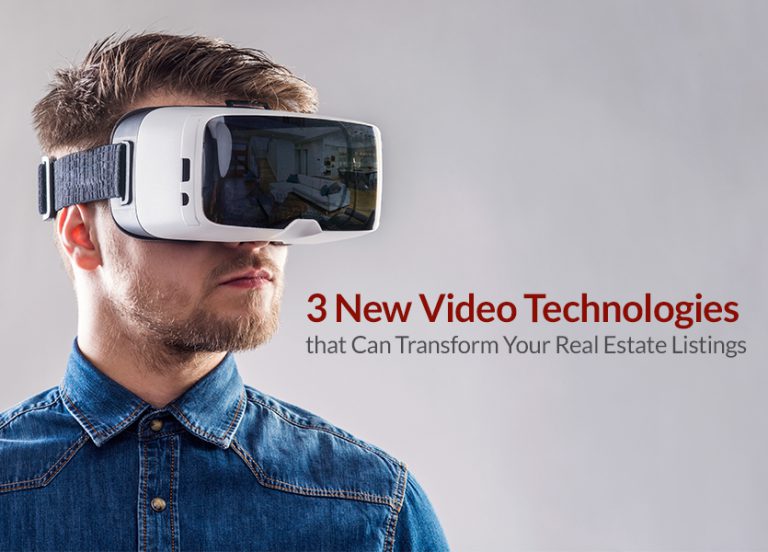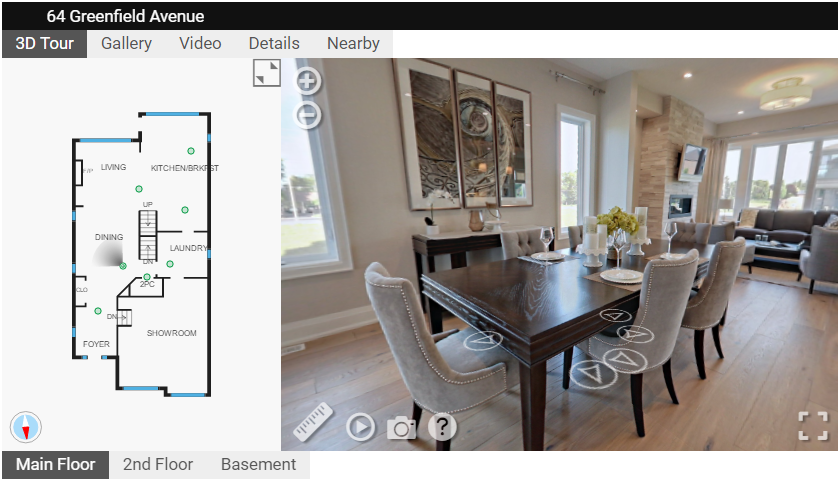You are viewing our site as a Broker, Switch Your View:
Agent | Broker Reset Filters to Default Back to List3 New Video Technologies that Can Transform Your Real Estate Listings
July 29 2016

Video is always evolving. It's an exciting time in the industry, though I'm sure the daily barrage of camera updates is just added noise in the real estate soundscape. There have, however, been a few notable advancements in video technology that you should pay attention to. These are advancements that can yield immediate and long-term results for the proactive, digitally-inclined brokerage.
Let's take a look at three of these advancements and see how they can help transform your listings.
VR
What it is: Virtual reality—always on the horizon, never within reach. Who else remembers this VR from the 90s? Well, VR is actually a real thing now and some brokerages are already taking it up. So what is VR in its current form? Here's a simple description from PC World:
Current virtual reality (VR) technology is more like strapping a screen to your face. The image is then rendered in stereoscopic 3D and viewed through fancy lenses, tricking you into believing you're looking at a real environment and not a screen mere inches from your eyes.
How it can be used: Imagine giving an immersive tour of a high-end listing in San Francisco to someone in Philadelphia. With VR, you could conceivably skirt all the time and travel costs it takes to get the lead in the listing. Just press play. Instant gratification. That kind of mobility is a game-changer for you and your clients.
Prospects: Something to keep an eye on. Though VR is in its infancy, the brokerage that adopts it now will be ahead of the curve when the technology matures. Also of note: Facebook recently bought Oculus VR, a leading VR tech company. This investment will surely pay off down the line.
360-degree videos
What it is: 360-degree videos are not virtual reality. VR simulates reality and allows you to 'travel' in that reality, interact with it. You can't do that with 360-degree video. What you can do is click around in the 360-degree video frame and see the entire environment—albeit from the fixed position of a static camera.
How it can be used: 360-degree videos are already being used in real estate listings. Check out this example below from Planitar.

Planitar's technology here combines floor plans with 360-degree videos of the listing. You can click on any room of the floor plan and get a 360-degree video of that room. The result is an interactive experience and the next best thing to VR.
Prospects: Use it—right now. Whereas VR is a constant work-in-progress, 360-degree technology is fully developed, affordable and easy-to-use. Contact us at sales(at)lwolf.com if you'd like more info on Planitar.
Low Light Cameras
What it is: If you've ever tried to take a video at night then you've noticed that it's impossible. This is because camera sensors rely on light to capture images. Cameras have this thing called ISO. This term refers to the camera's sensitivity to light. ISO is measured in numbers (500, 1600, 6400). The lower the number, the slower the camera's response to light. During the day, you can keep your camera at a low ISO because there is more light being sent into the camera, however at night, when less light available, you have to raise the ISO and increase the speed with which your camera processes light. Doing so brightens your image but also adds a ton of noise (or grain) to the image. This in turn ruins the image.
With low-light cameras, however, you can raise the ISO extremely high and brighten the image without the added grain. The result is not only 'normal' but beautiful, surreal. Here's an example of the Sony A7s from Philip Bloom.
How it can be used: You can take pictures and/or videos of a listing when it's dark and it'll actually look good. This means you can capture everything from the view of the stars from the backyard to the moonlight that falls on the kitchen floor. Viewers can see video of what the listing looks at all times of the day, something they're not used to seeing. In one fell swoop, you can increase your listing's exposure and differentiate them from your competitors'.
Prospects: Use it—yesterday. These cameras have been around for a while now and are only getting better and more affordable.
Bottom line
Video technology is always evolving. It's important to stay up-to-date on changes and think about how they might help you improve your client's experience. The key is filtering out the important info from the inconsequential.
To view the original article, visit the Lone Wolf blog.









